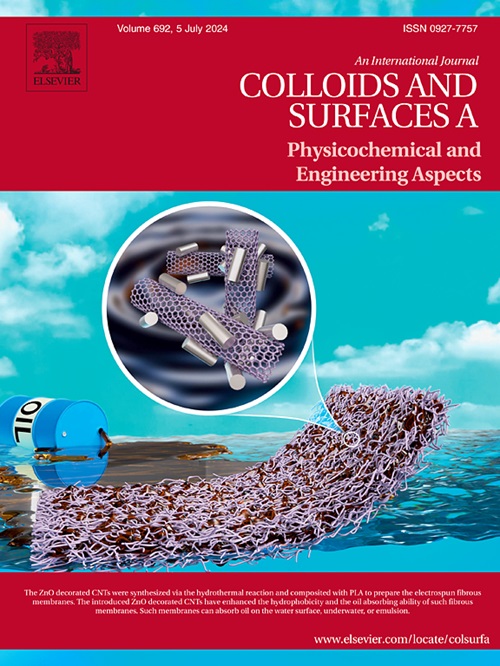Construction of a cold-resistant shelter: Assembly of bacteria on hierarchical porous material for low-temperature phenol bio-degradation and machine learning prediction
IF 5.4
2区 化学
Q2 CHEMISTRY, PHYSICAL
Colloids and Surfaces A: Physicochemical and Engineering Aspects
Pub Date : 2025-07-24
DOI:10.1016/j.colsurfa.2025.137840
引用次数: 0
Abstract
Low temperature significantly limit microbial growth and metabolism, thereby reducing the efficiency of pollutant degradation by environmental microorganisms. In this study, a hierarchical porous material (BF-PU-PI) was fabricated by the breath figure method. Through electrostatic interactions with the multifunctional groups on the microbial surface, Bacillus cereus ZWB3 was effectively assembled within the material, forming BF-PU-PI@ZWB3. Compared to ZWB3, BF-PU-PI@ZWB3 exhibited a 40 % higher phenol degradation rate. Interestingly, at 15 °C, it maintained high degradation efficiency, with a 36 % improvement over the ZWB3. The protective microenvironment provided by BF-PU-PI significantly enhanced the activities of key enzymes (phenol hydroxylase and catechol 1,2-dioxygenase), while alleviating intracellular oxidative stress. Furthermore, the thermal conductivity of BF-PU-PI was reduced to 0.0167–0.0333 W/(m·K) compared to PU, partially substituting for extracellular polysaccharides and free fatty acids to offer thermal insulation. This thermal regulation promoted the low-temperature metabolic activity of ZWB3 for phenol degradation. Machine learning models further predicted that BF-PU-PI@ZWB3 could sustain phenol degradation activity even at 8 °C. This hierarchical porous material acts as a “cold-resistant shelter” for microorganisms, enabling efficient biodegradation under low-temperature.
抗寒庇护所的构建:细菌在分层多孔材料上的组装,用于低温苯酚生物降解和机器学习预测
低温极大地限制了微生物的生长和代谢,从而降低了环境微生物对污染物的降解效率。本研究采用呼吸图法制备了层次化多孔材料(BF-PU-PI)。通过静电作用与微生物表面的多官能团相互作用,蜡样芽孢杆菌ZWB3被有效地组装在材料内部,形成BF-PU-PI@ZWB3。与ZWB3相比,BF-PU-PI@ZWB3的苯酚降解率提高了40 %。有趣的是,在15°C时,它保持了很高的降解效率,比ZWB3提高了36% %。BF-PU-PI提供的保护性微环境显著增强了关键酶(苯酚羟化酶和儿茶酚1,2-双加氧酶)的活性,同时减轻了细胞内氧化应激。与PU相比,BF-PU-PI的导热系数降低至0.0167-0.0333 W/(m·K),部分取代了胞外多糖和游离脂肪酸,起到了保温的作用。这种热调节促进了ZWB3降解苯酚的低温代谢活性。机器学习模型进一步预测BF-PU-PI@ZWB3即使在8°C下也能维持苯酚降解活性。这种分层多孔材料作为微生物的“耐寒庇护所”,在低温下实现有效的生物降解。
本文章由计算机程序翻译,如有差异,请以英文原文为准。
求助全文
约1分钟内获得全文
求助全文
来源期刊
CiteScore
8.70
自引率
9.60%
发文量
2421
审稿时长
56 days
期刊介绍:
Colloids and Surfaces A: Physicochemical and Engineering Aspects is an international journal devoted to the science underlying applications of colloids and interfacial phenomena.
The journal aims at publishing high quality research papers featuring new materials or new insights into the role of colloid and interface science in (for example) food, energy, minerals processing, pharmaceuticals or the environment.

 求助内容:
求助内容: 应助结果提醒方式:
应助结果提醒方式:


